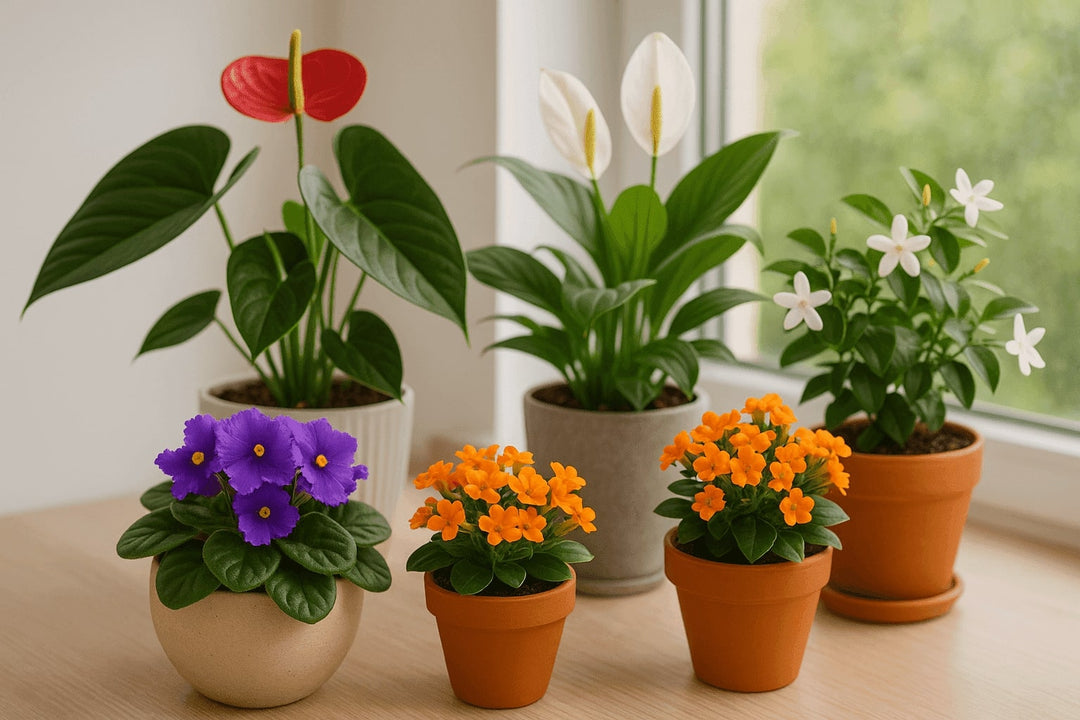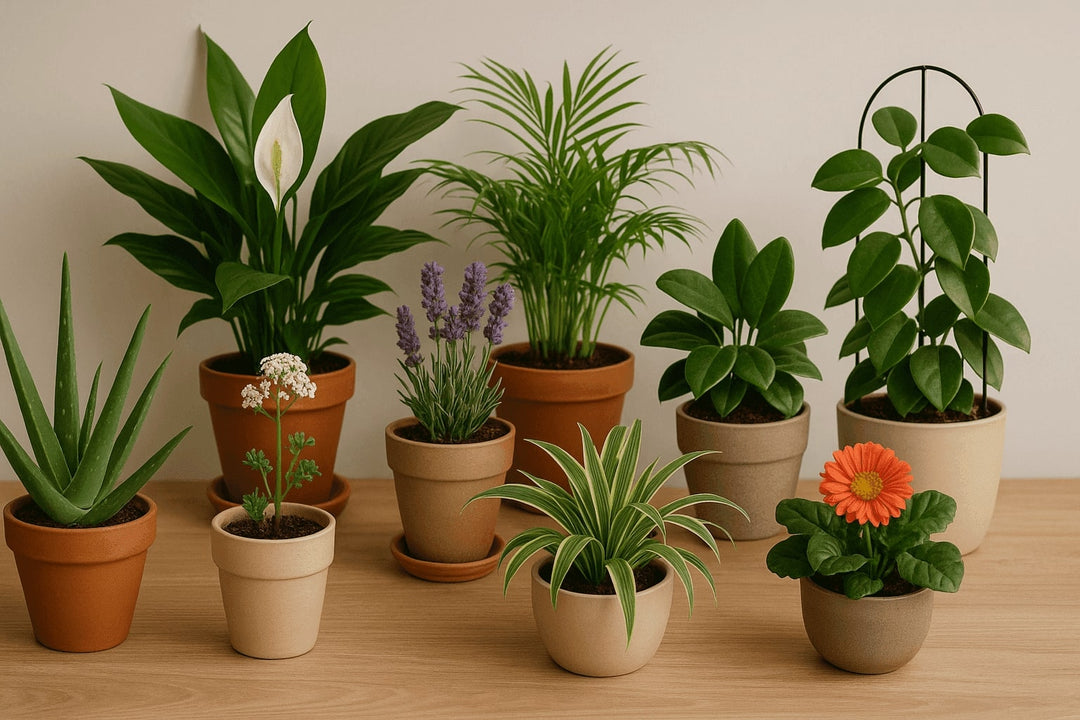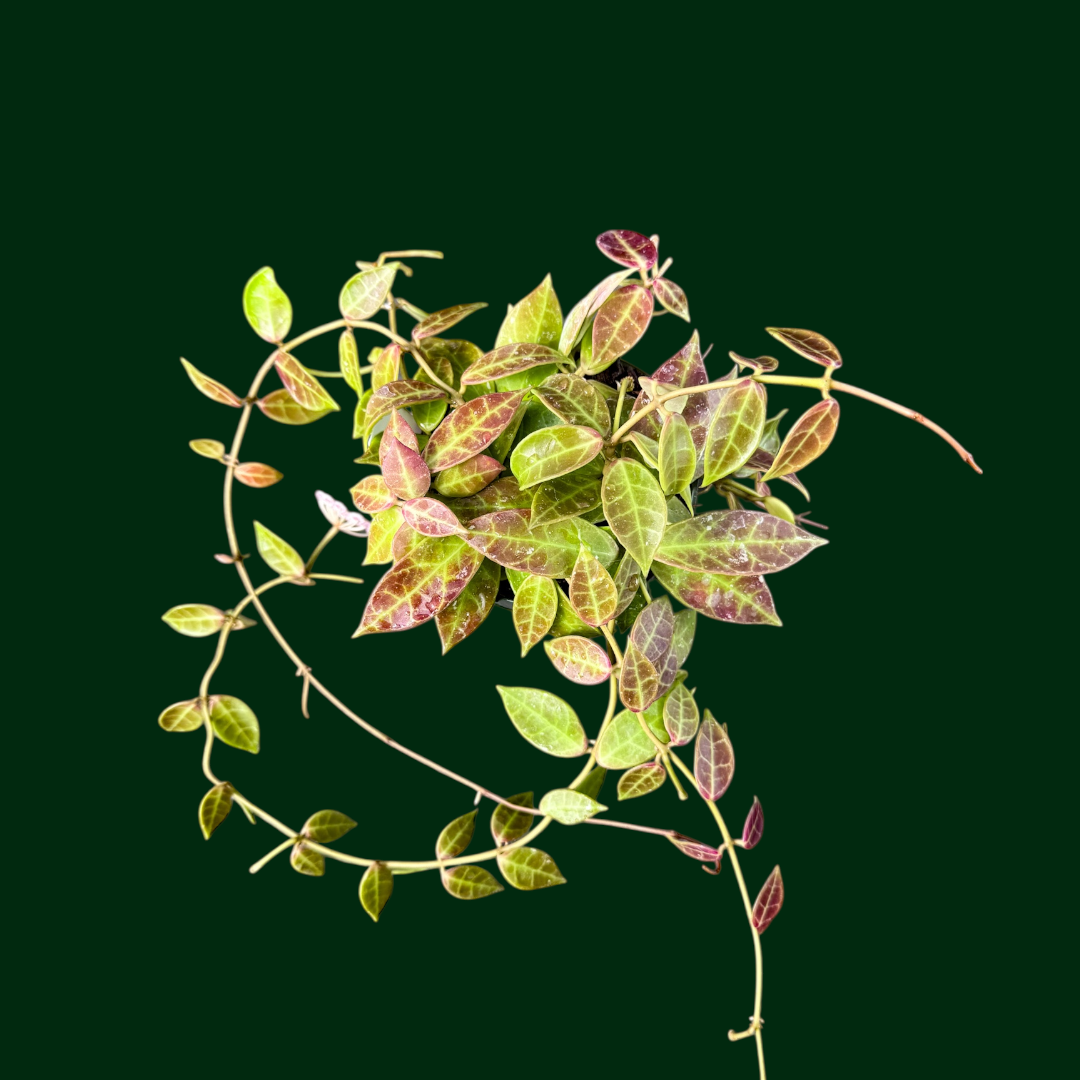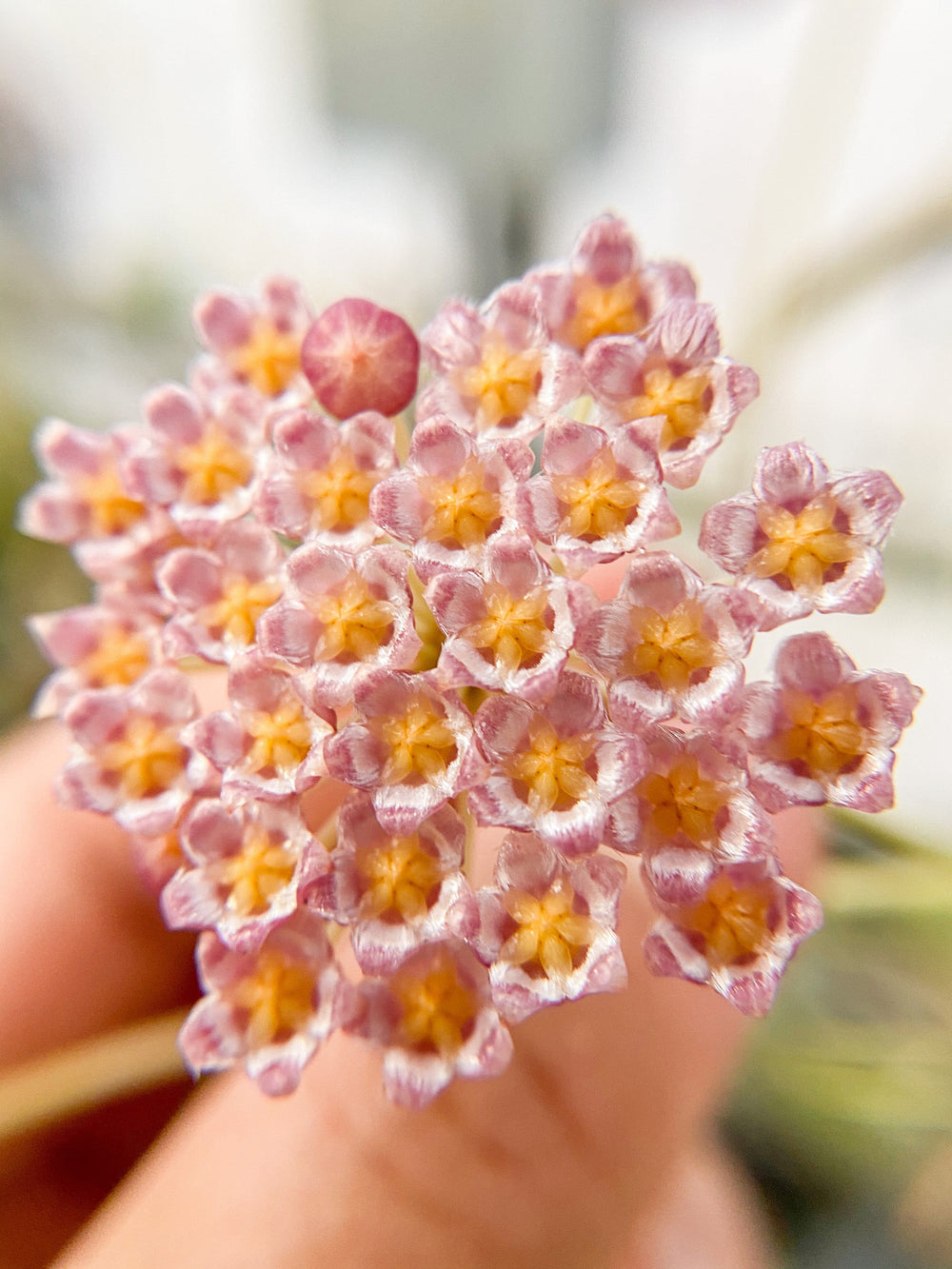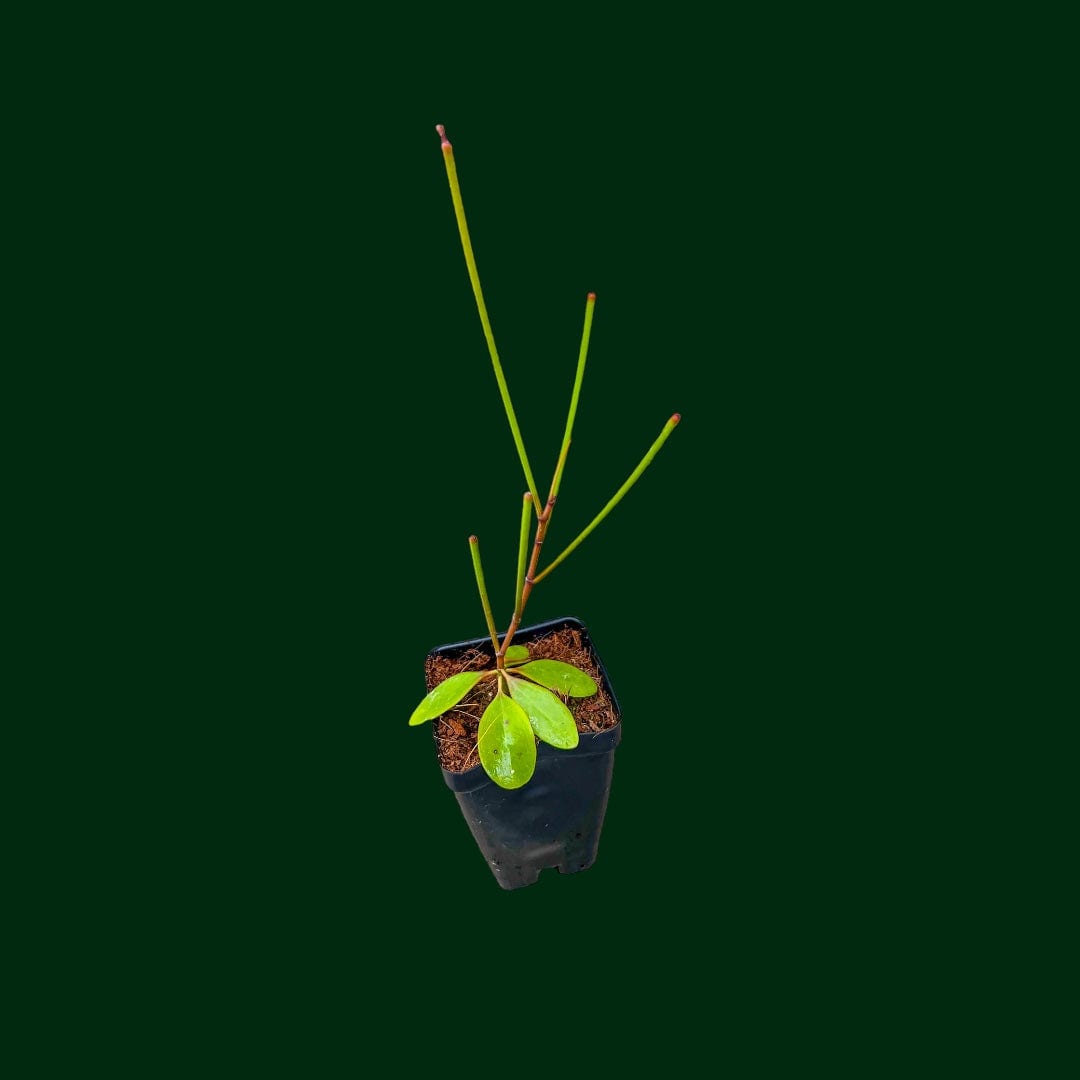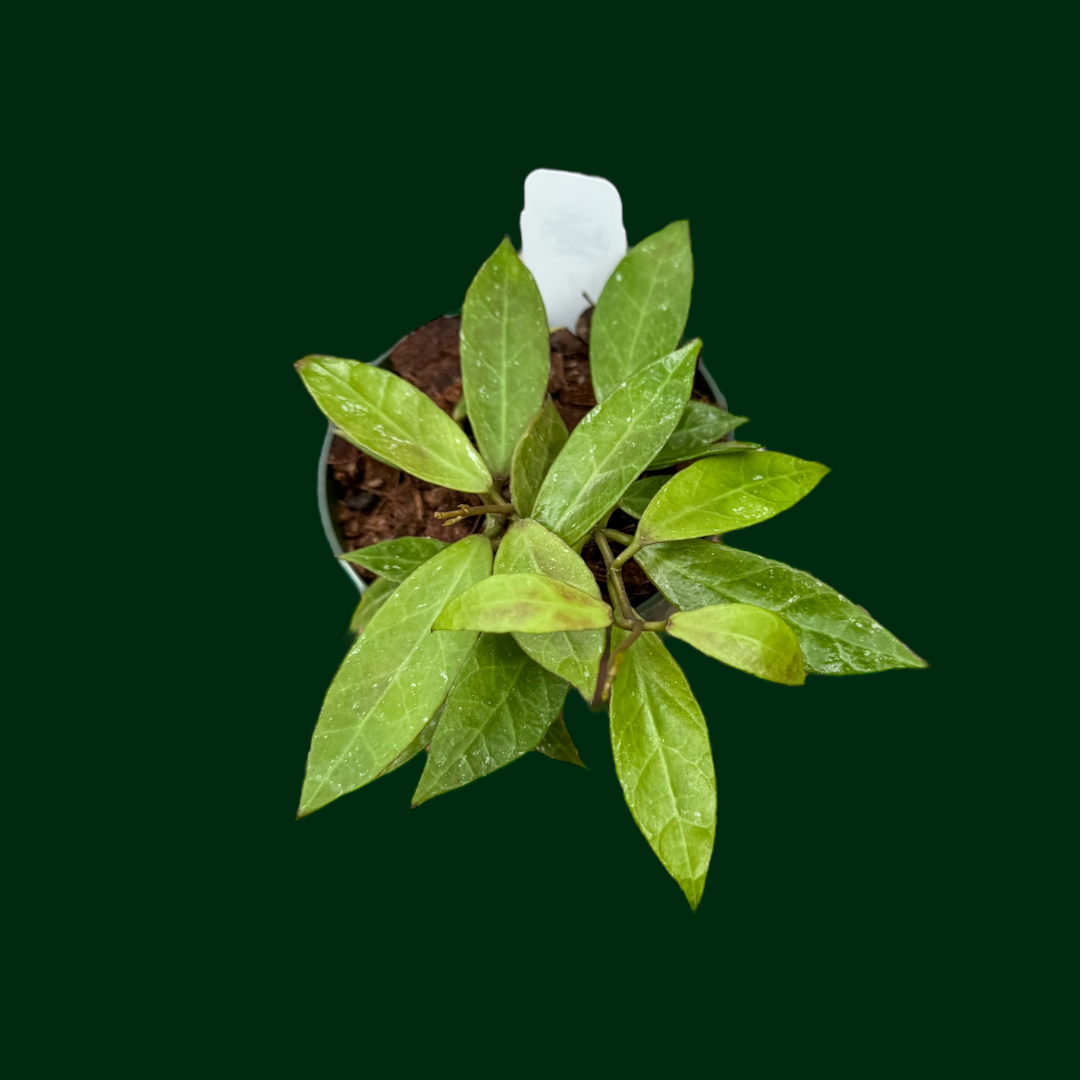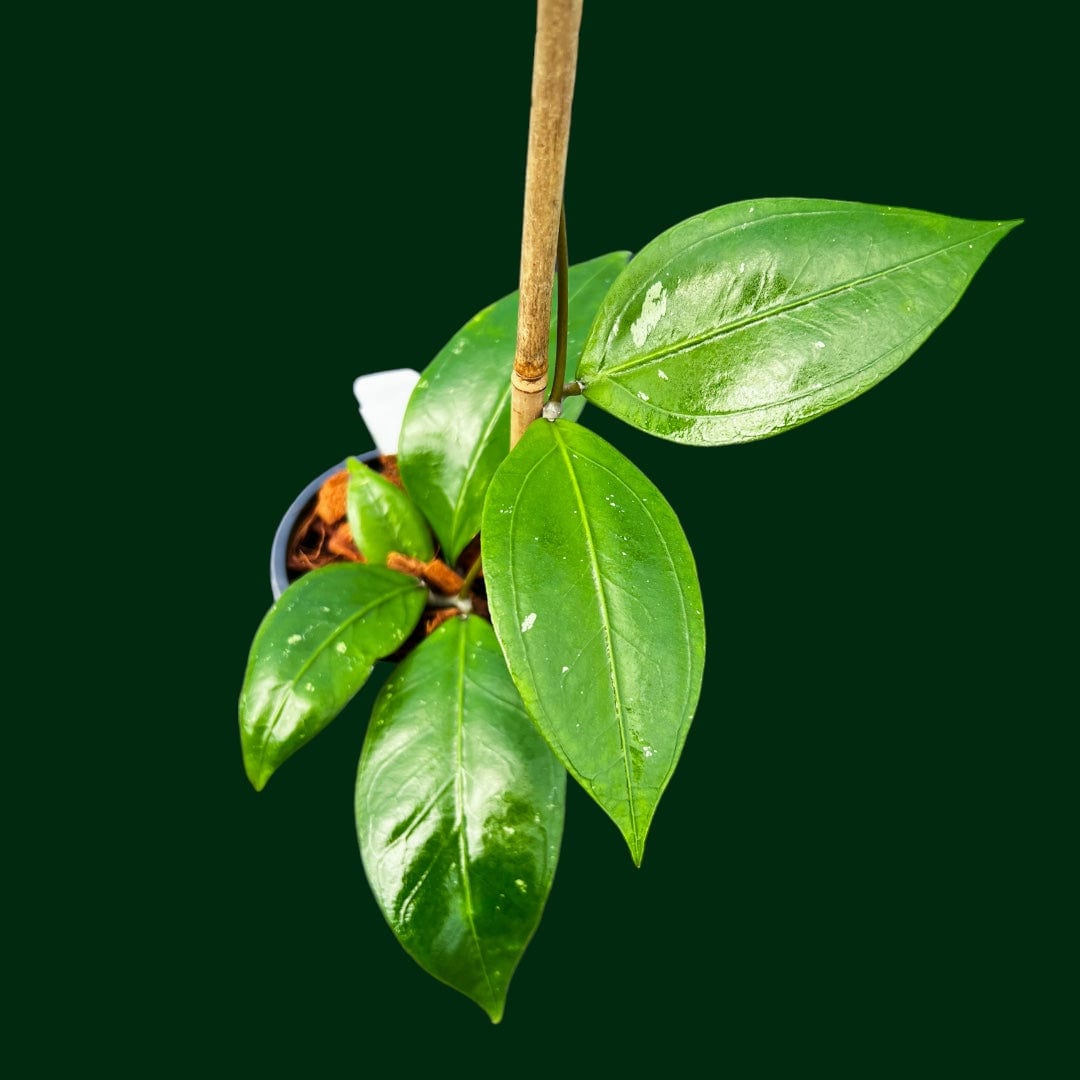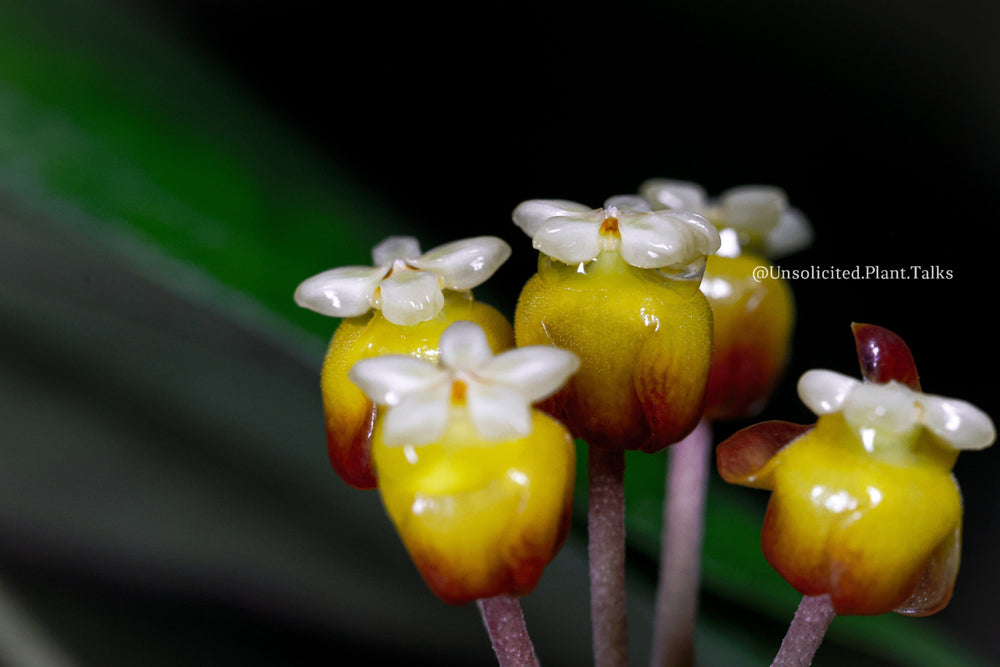What is a Hoya Plant? A Beginner’s Guide
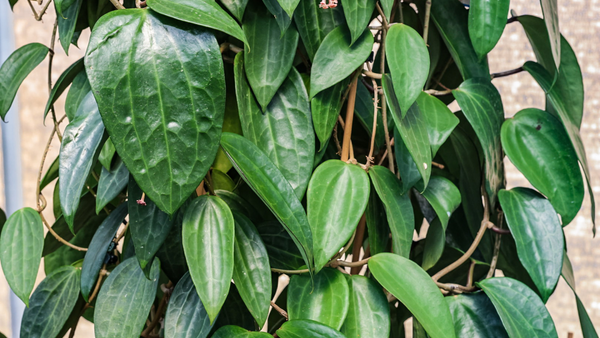
Table of Contents
When discussing Hoyas with casual house plant enthusiasts, we often refer to them as "the succulent of the tropical world". This is because of their relatively easy maintenance requirements compared to other tropical plants. However, this Genus should not be underestimated; within its variety of species, there lies great potential for beauty and awe.
Hoya plants are native to tropical and subtropical Asia, Australia, and Polynesia and are characterized by their beautiful and unique foliage, vining stems, and flowers, which are often fragrant and star-shaped.
In this beginner's guide to Hoya, we'll dive into the world of Hoyas, covering everything from their origin and types of Hoya care requirements and propagation techniques.
HOYA: A PERFECT HOUSEPLANT

Hoya plants are unique in a number of ways, which is why they have become so popular among indoor gardeners. I personally developed an affinity for Hoyas due to their low-maintenance care requirements, as well as the impressive diversity of species they offer.
If you're not a fan of flowers, some varieties feature captivating foliage that more than make up for the lack of blooms. The leaves can range widely in size and shape, and they come in a range of colors, from deep greens, to bright silver!
Adding to their natural beauty are Hoya varieties with variegation, such as Hoya sp. aff. burtoniae. It features multi-colored leaves with splashes or streaks of different colors.
Some varieties of Hoya can even change color under bright light, much like a human getting a tan. For these plants, "sunstressing" can produce vivid reds, oranges, and pinks, depending on the variety, and makes growing them a delight. Each leaf of your plant is truly a unique work of art.
Another reason that Hoya plants are special is their unique flowers. Hoya flowers are often described as otherworldly, with a wax-like texture, and delicate and intricate structure that is unlike any other plant. They come in a variety of colors, from pure white to deep burgundy.
Additionally, many species boast deliciously fragrant blooms; a single pot of blooming Hoya lacunosa can fill even an entire room with aromas reminiscent of coconut, butterscotch, jasmine, bubblegum, chocolate and more!
Finally, it's easy to care for a Hoya. Most varieties don't require a lot of special attention or maintenance, making them a great choice for beginners or anyone who wants a low-maintenance indoor plant.
First-time Hoya owners usually begin with beginner-friendly varieties, and then experiment with rarer, harder-to-find varieties later on.
KEY CHARACTERISTICS OF HOYA PLANTS

- Succulent leaves: Hoyas have thick, waxy leaves that can store water and help the plant survive in drier conditions.
- Twining vines: Hoyas are known for their twining vines that can wrap around objects and climb up walls or trellises, or cascade from hanging baskets.
- Fragrant flowers: Many Hoya varieties produce small, star-shaped flowers that have a sweet, pleasant fragrance.
- Long-lived: Hoyas can live for many years with proper care, and some can even live for decades.
- Low maintenance: Hoyas are relatively easy to care for and can thrive in a variety of light and soil conditions.
- Variegated leaves: Some species of Hoyas you'll find have variegated leaves, which means that they have different colors or patterns on their leaves.
- Epiphytic: Hoyas are epiphytic plants, which means that they grow on other plants or objects for support. In their natural habitat, they can be found growing on trees and rocks. This is why many of them thrive on a trellis.
- Propagation: Hoyas can be propagated through stem cuttings, making them easy to share with friends or expand your Hoya collection.
- Diversity: There are over 300 species of Hoyas, each with their own unique characteristics and growing requirements.
Overall, Hoyas are a versatile and attractive plant that can make a great addition to any indoor or outdoor garden.
WHAT ARE THE DIFFERENT HOYA VARIETIES?

There are over 300 different types of Hoyas, each with its own unique characteristics, but some of the most popular types include:
- Hoya fungii: This is perhaps one of my favorite Hoyas, and it is known for its glossy, dark green leaves and clusters of waxy, pink or white flowers.
- Hoya lacunosa: A Hoya with small, round, light green leaves and fragrant, white or pink flowers.
- Hoya kerrii: This Hoya species is known for its heart-shaped leaves also known as the sweetheart Hoya, making it a popular gift for Valentine's Day or Mother's Day. It produces small clusters of pink or white flowers.
- Hoya obovata: This Hoya species is prized for its large, round leaves and clusters of white or pale pink flowers.
- Hoya globulosa: This is a species of Hoya native to the Philippines. It is a climbing plant with elongated, narrow leaves that can reach up to 12 inches (30 cm) in length. The leaves are deep green in color and have a glossy surface.
- Hoya latifolia: This is a good one! It has so many different clones, grows massive leaves, and some can sunstress to a deep purple color! Also, the clusters of flowers are something else!
HOYA PLANT CARE - PERFECT FOR BEGINNERS

Now that we know what makes Hoya plants so special, let's talk about plant care for beginners. As we mentioned, Hoya plants are generally low-maintenance, but there are a few care tips you need to keep in mind to keep your Hoya thriving.
HOYA PLANT CARE GUIDE - A QUICK OVERVIEW
| Factor | Ideal Condition |
|---|---|
| Light |
6 hours of indirect sunlight. Up to 2 hours of direct sunlight. Close to east and north-facing windows and far from west and south-facing windows. |
| Watering |
During spring and summer: every two weeks. During winter: every three to four weeks. Soil needs to be dry before watering. |
| Temperature and Humidity |
Ideal temperature: 68 and 75 F (20 to 24°C) Ideal humidity: 60% and above. Temperature should not fall below 50 F (10°C) or above 90 F (32°C). |
| Soil | Ideal soil needs to drain water quickly and have good air circulation. Coco Husk is a great option. |
| Fertilizer |
Should only be used in spring and summer. First, use a nitrogen-rich fertilizer, and when the Hoya plant approaches blooming, it should be switched to a phosphorus-rich one. |
| Repotting |
Every two to three years unless there are signs that the plant needs repotting earlier. The pot should be one size larger than the previous one and have drainage holes. |
| Propagating | Three propagating methods available: stem cuttings, leaf cuttings, and layering. |
| Pruning |
Cut off any dead or damaged parts. To control the overgrowth, cut the stems to the desired size regardless of their condition. |
| Cleaning | Three ways to clean the plant: using a wet cloth with soap to wipe the leaves, using a hose, or using the shower. |
HOW TO CARE FOR A HOYA PLANT?

While there are many different types of Hoya plants, most of them need similar conditions in order to flourish. Things like how much light the plant gets or the temperature surrounding it can truly make or break a plant, so it’s important to get them right for your Hoya to grow and reward you with a beautiful array of flower clusters when the time comes.
LIGHT
When it comes to how much light Hoya plants need, you should place them in a location where they will have access to indirect sunlight for at least six hours a day. Medium to low light would be fine, too, but keep in mind that they won’t be as strong as the plants kept in indirect light, and they will have fewer leaves, too.
As for direct sunlight, a maximum of two hours, either in the morning or evening, should be fine, depending on the plant, but you have to remember that too much light can also be harmful to them. Hoya plants that have been exposed to sun too much might turn yellow or have burnt leaves.
So, what is the perfect location for Hoya plants? Ideally, they should be kept close to the east or north-facing windows or far away from the west and south-facing ones.
If you live in a location where sunlight is limited, you might want to consider purchasing grow lights specifically designed for indoor plants. You should keep them under it for about 12 to 14 hours a day.
WATER
As far as watering goes, Hoya plants don’t differ much from other succulent plants, meaning that after you water them, you should wait with the next one until the soil dries out. They don’t need to be watered as some other plants because of their leaves - since they’re thick and fleshy, they can hold moisture much better.
On average, that would mean watering every fortnight in the spring and summer months. In winter, on the other hand, watering your Hoya plant either once every three to four weeks should be more than enough - but remember to always check the soil before doing so.
TEMPERATURE AND HUMIDITY
Hoya plants love warm and humid environments, and they thrive when the temperature falls between 65 and 80 F (18 to 27°C) during the day and between 60 and 65 F (16 to 18°C) during the night. Ideally, you should keep the temperature between 68 and 75 F (20 to 24°C).
If the temperature falls below 50 F (10°C) or above 90 F (32°C), your plant can and most likely will experience damage, including discoloration or leaves falling off.
As for humidity, you should keep it above the 60% level. If it’s lower, you might notice, for example, that their growth has slowed down.
SOIL
The perfect soil for Hoya plants is one that drains water quickly and that has good air circulation - even the plain old potting mix will do just fine if those two conditions are met. Good drainage is crucial, as that way you won’t overwater your plant - doing so can lead to root rot.
A soil we recommend taking a look at is Coco Husk - as proved by dozens of happy plant owners, Hoya plants love this soil and thrive in it.
Tip: Adding some perlite or pumice to the soil can improve the soil’s drainage.
FERTILIZER
Hoya plants need a higher nitrogen fertilizer, as it will stimulate foliar growth. However, when they are closer to blooming, a change is required - that’s when you should be switching to fertilizer rich in phosphorus content to encourage bigger and fuller flowers.
It’s important to remember that a fertilizer should only be used during the growing season - so, between spring and summer. There’s no point in fertilizing your plants during winter, as due to the decreased amount of light they get, their growth is slowed down, and they don’t use as much energy as during the warm months. Since less energy is consumed, they don’t need additional nutrients.
HOW TO PROPAGATE HOYA PLANTS

One of the great things about Hoyas is that they are easy to propagate, which means you can share them with your friends and family or create new plants for yourself.
Propagating in the greenhouse is one of my most rewarding activities, as it entails selecting the ideal cuttings and carefully nurturing them until fully grown. It serves as a reminder for me that patience and hard work can lead to a truly fruitful outcome when done with care and love!
There are three different ways to propagate your Hoya, so you can decide on the one that you think will work the best for your plant.
STEM CUTTINGS
The first one is stem cutting. In this propagation method, you choose a stem that has at least two nodes and cut it cleanly using a sharp pair of scissors under the stem’s lowest node. Remove any leaves there, keeping a few at the top of the cut-off stem. Dip the bottom in rooting hormone and place it in a potting soil or soiless mix. Keep taking care of it, and after a few weeks, you should see it growing roots.
LEAF CUTTINGS
The second Hoya plant propagation method is leaf cuttings. It’s very similar to the first one, with the difference being that you choose a healthy leaf with a short piece of stem to cut off. Dip it in a rooting hormone, place it in a potting soil or soilless mix, and wait a few months. You’ll see the effects of the rooting soon enough.
LAYERING
The final method you can choose when propagating Hoya plants is layering, which is usually the method of choice for older or bigger plants. Choose a healthy stem that is long enough for you to be able to bend it. Make a small cut where the stem touches the soil and pin it down with a U-shaped stake or a piece of wire.
Then, cover the incision you made with rooting hormone, and cover the whole thing with a plastic bag or plastic wrap, creating a miniature greenhouse. In just a few months, you should notice the roots forming.
DIVISION
If your Hoya has multiple stems, you can divide it by carefully removing the plant from its pot and separating the stems. Each stem should have its own set of roots. Pot up each stem in a well-draining soil mix and water thoroughly.
CLEANING YOUR HOYA PLANT
Another important step when it comes to caring for your Hoya plants is cleaning their leaves. Plants use their leaves to perform photosynthesis, and if they’re dirty and covered with dust, the primary photosynthesis site gets blocked, making it more difficult for the plant to generate its own nutrients.
So, how to clean Hoya leaves? There are three ways to do it. Probably the best one is using a soft cloth dipped in a soap and water solution and gently wiping the leaves, both the top and bottom. You can also hose it down outdoors or use your shower, but truthfully the first method is the best one, in our opinion.
HOW TO REPOT YOUR HOYA PLANT
Hoya plants should be repotted once every two to three years so that their roots have room to grow more. When repotting, choose a pot that not only is one size larger than the one your plant is currently in, but also has drainage holes at the bottom.
Here are a few things that might indicate it’s time to re-pot your Hoya plant, even if the two years haven’t passed:
- The roots of your plant have outgrown the pot and are growing out of the drainage holes.
- Your plant has stopped or slowed down growing.
- The soil is drying out more quickly than it used to, forcing you to water your Hoya plants more frequently than before.
- The soil breaks down, has a stale odor, or holds excess moisture.
- You notice leaves discoloration.
PRUNING YOUR HOYA PLANT

Sometimes, your Hoya plant grows so big that it loses its shape - this uncontrolled growth not only affects the plant’s beauty, as it becomes less appealing to the eye, but it can actually also slow down the blooming.
To prune your Hoya plant, cut any dead or damaged parts right above the nodes. If your Hoya grows too big, cut down the stems to the size you want, even if they’re healthy, as otherwise, it will continue to grow.
Tip: Keep in mind that it’s better to cut off smaller parts rather than big chunks, especially if you’re pruning it to size, as it will make the job easier, and you don’t risk unnecessarily cutting off too much.
COMMON HOYA CARE MISTAKES
Mistakes happen, especially if you haven’t cared for this specific plant species before. So, here are some of the most common ones that you can easily avoid:
- Using soil that doesn’t have good drainage. Choosing the right soil for your plant is crucial - if the soil doesn’t drain water well, it might keep too much moisture, eventually leading to root rot. If you think your soil doesn’t let the water through, you can use sand, perlite, or pumice to fix it.
- Overwatering. As mentioned, the soil needs to dry out before you water your plants again. However, many people don’t wait for that to happen, leading to too much water being collected in the soil. Always make sure that the soil is dry before watering. Also, use a snug pot, and don’t let your plant sit in water.
- Keeping the plant in a room with high humidity and no airflow. As tropical plants, Hoyas thrive in humid conditions. However, if there’s not enough airflow, fungus might become an issue, often leading to fungal diseases.
- Keeping the plants in dark rooms. For some reason, many seem to think that Hoya plants like to be kept in dark environments, and they often place them somewhere they have no access to sunlight. That is incorrect, as they actually like sunlight and grow better when indirectly exposed to it. So, ideally, you should keep your plants somewhere in the vicinity of east and north-facing windows.
IN CONCLUSION
Hoyas are fascinating and beautiful plants that have captured the hearts of many plant enthusiasts, including me! Throughout this discussion, we have highlighted some of the key points about Hoyas, including their characteristics, care requirements, and propagation techniques.
For those who have not yet experienced the joys of growing Hoyas, I encourage you to give it a try. With a little bit of patience and dedication, you can cultivate these succulent plants and enjoy their stunning flowers and foliage. It's been one of the most rewarding experiences of my life, and I'm grateful to be able to share it with all of you through this business.
Finally, we recommend exploring our additional resources to learn more about Hoyas and connect with other Hoya enthusiasts. So don't hesitate to dive in and start exploring the world of Hoyas!



